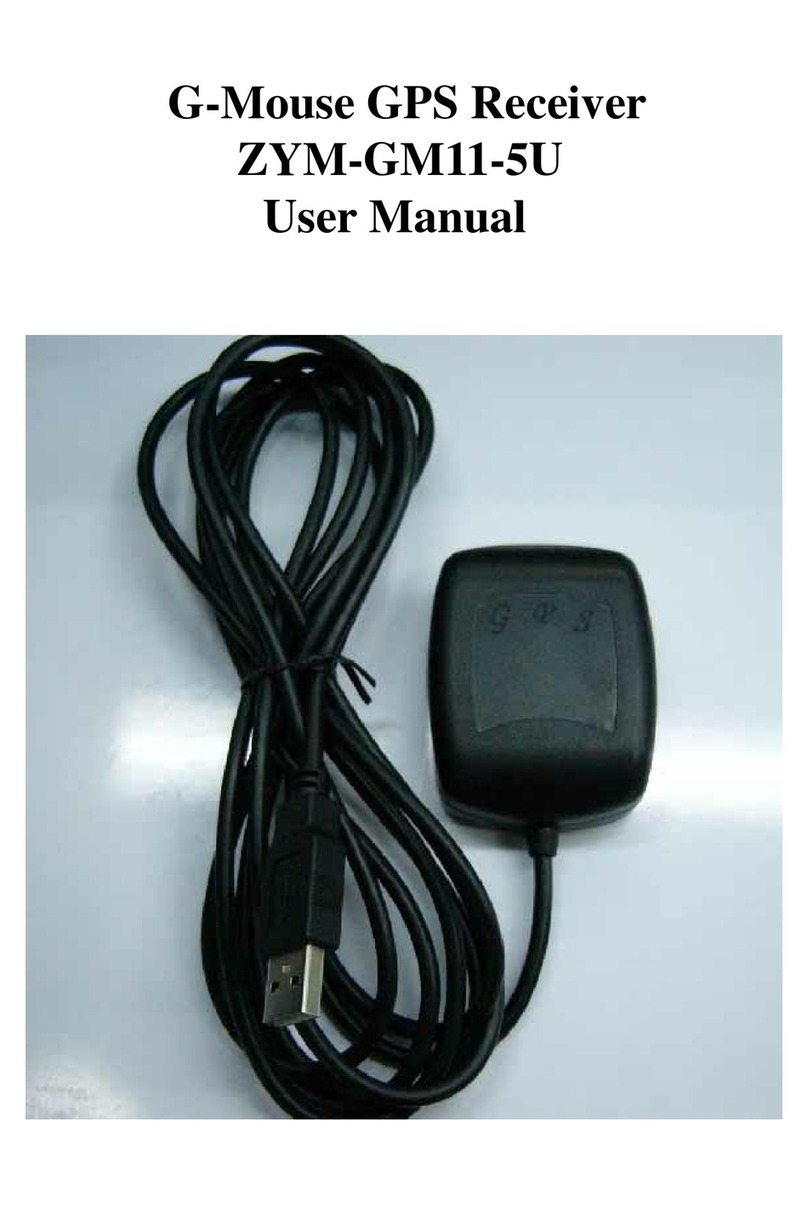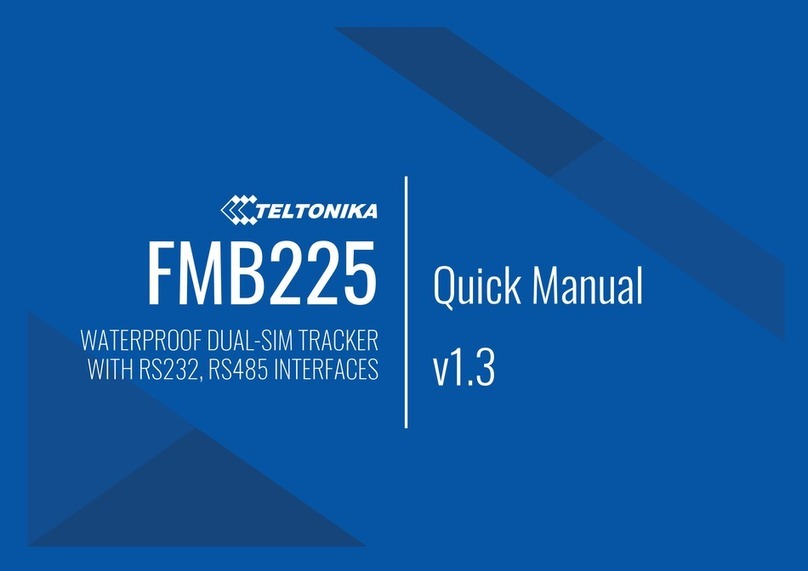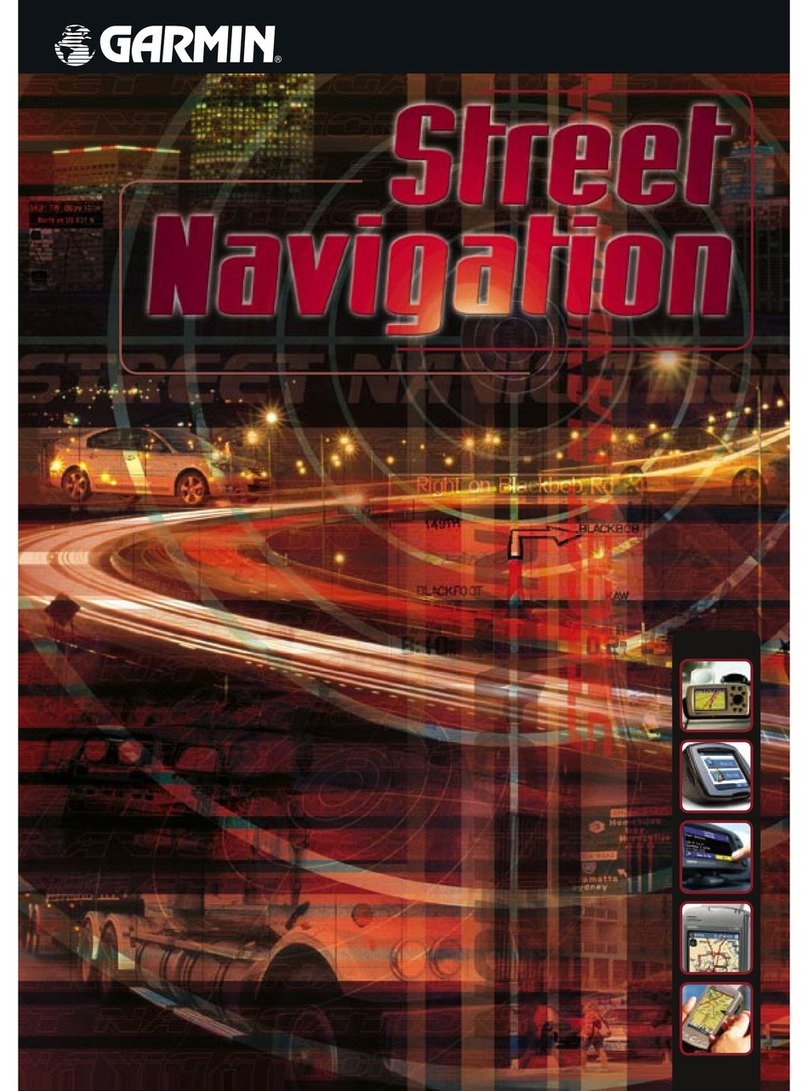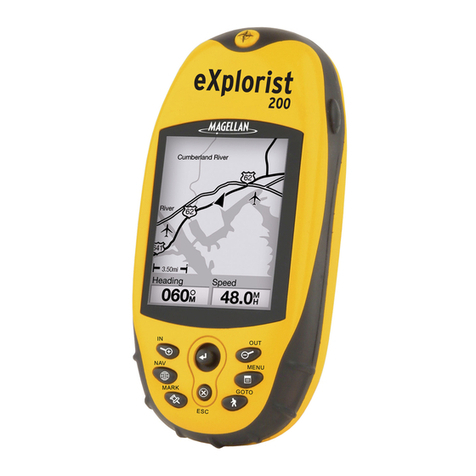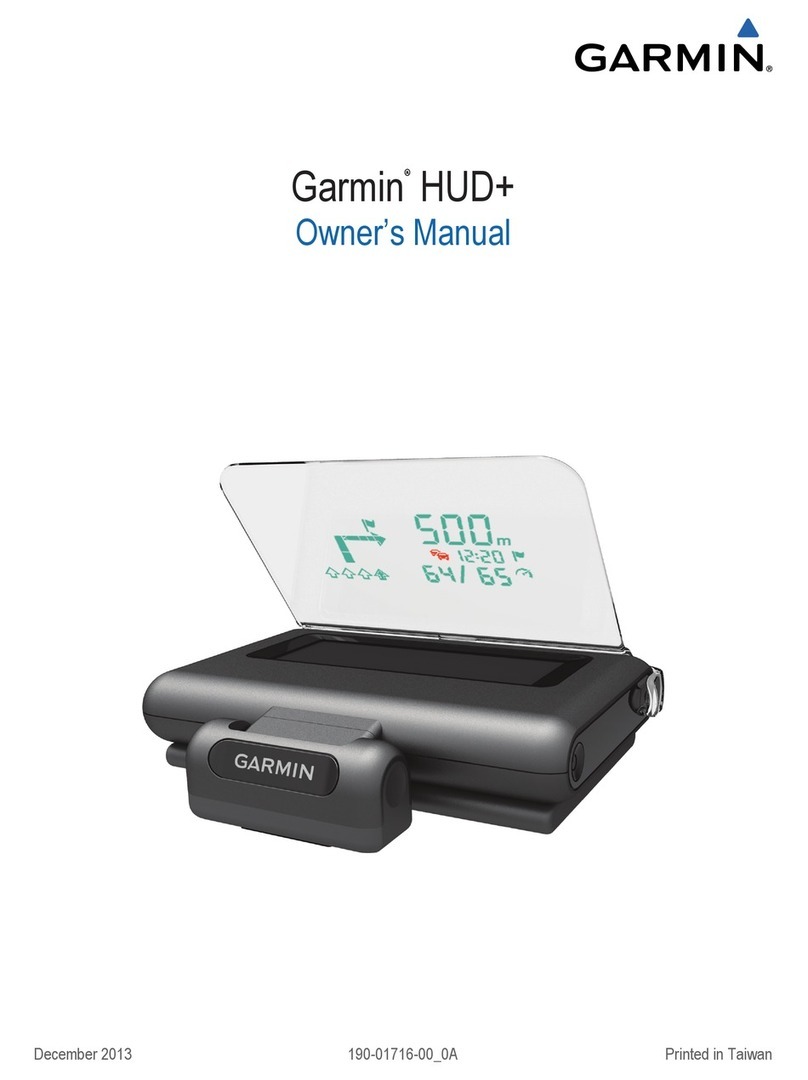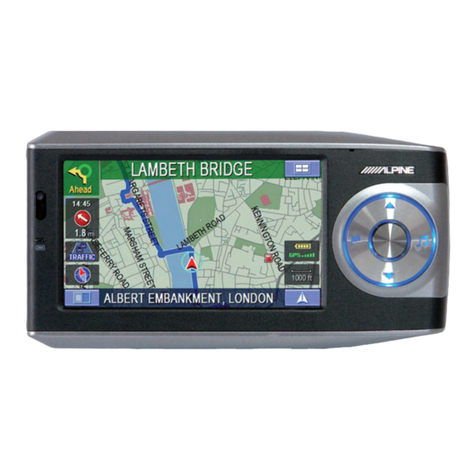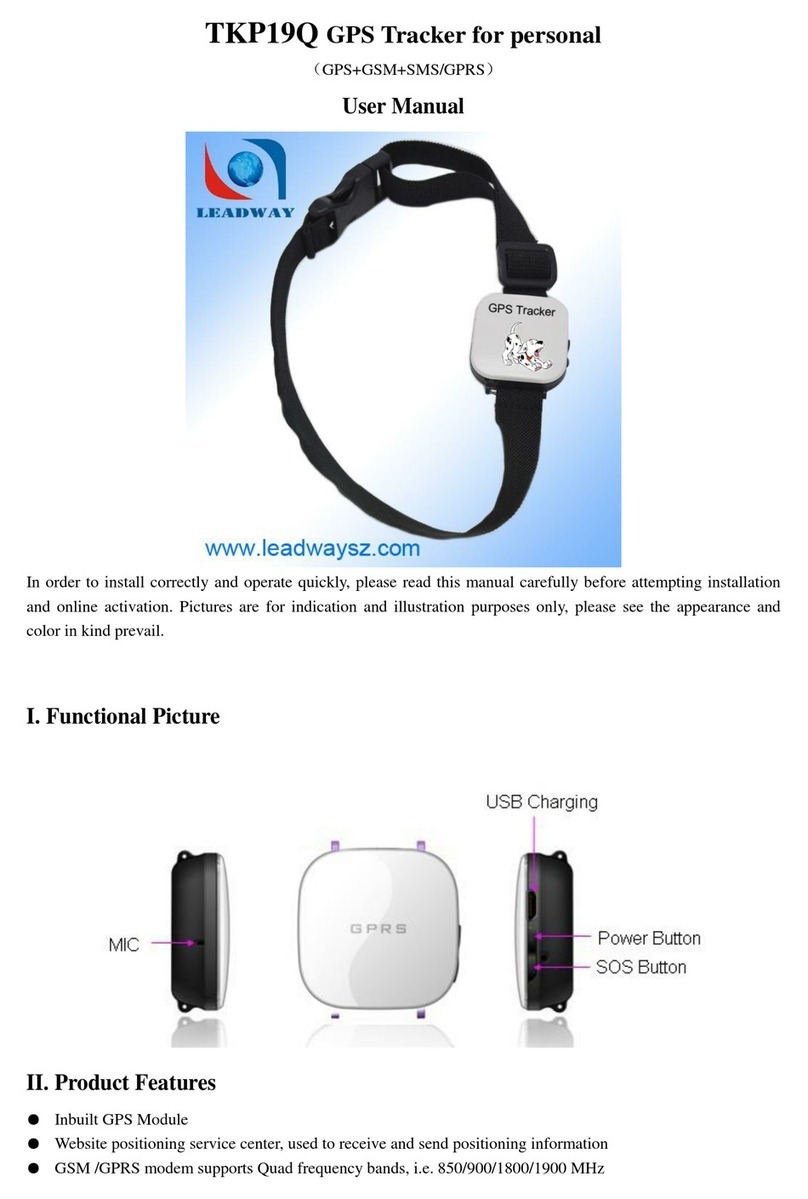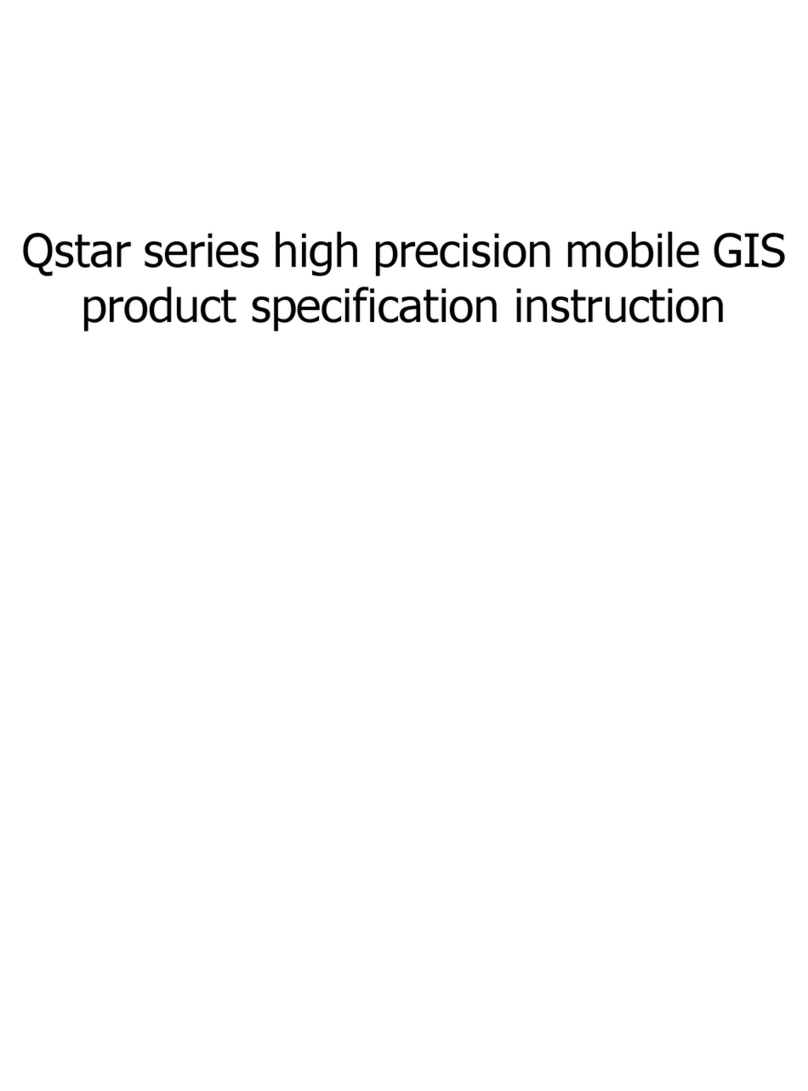G-Mouse G-Mouse MR G-Mouse GPS Receiver G-Mouse MR User manual

G-Mouse GPS Receiver
G-Mouse MR
User Manual

G-Mouse GPS Receiver User Manual
Page 1
Table of Contents
Usage Notice…………………………………………………………………………………………….2
0. Quick Start…………………………………………………………………………………………. 2
0.1 Check the package……………………………………………………………………………...2
0.2 Check the connector…………………………………………………………………………….2
0.3 Connection to your equipment………………………………………………………………….2
1. Introduction…………………………………………………………………………………………3
1.1 Introduction……………………………………………………………………………………..3
1.2 Features…………………………………………………………………………………………3
1.3 Technical Specification…………………………………………………………………………4
2. Operational Characteristics………………………………………………………………………4
2.1 Initialization setup………………………………………………………………………………4
2.2 Navigation………………………………………………………………………………………5
3. Hardware Specification…………………………………………………………………………..5
3.1 Outline………………………………………………………………………………………….5
3.2 Connection interface……………………………………………………………………………5
3.3 Output connector……………………………………………………………………………….6
3.4 Accessories……………………………………………………………………………………..6
4. G-Mouse USB Driver…………………………………………………………………7
4.1 System requirement………...…………………………………………………………………..7
4.2 Install USB driver………………………………………………………………………………7
4.3 Verify the driver installation……………………………………………………………………8
5. Warranty………………………………………………………………………………………………8
6. Trouble Shooting Guide………………………………………………………………………………8
6.1 Satellite signal problem…………………………………………………………………………8
6.2 Position fixing problem…………………………………………………………………………9
6.3 GPS not fix problems.…………………………………………………………………………10
6.4G-Mouse driver confliction problem………………………………………………………….10
Appendix A Software Protocol…………………………………………………………………………11
A.1 NMEA transmited message…………………………………………………………………..11
Appendix B Coordinate System and Output Settings………………………………………………….14
B.1 Coordinate system…………………………………………………………………………… 15
B.2 Output settings………………………………………………………………………………...15
Appendix C Order Information…………………………………………………………………………15
C.1 G-Mouse packages……………………………………………………………………………15
C.2 Accessories……………………………………………………………………………………15
C.3 Product packages……………………………………………………………………………...15

G-Mouse GPS Receiver User Manual
Page 2
Usage Notice
Please read before you start to use the GPS receiver:
ØGPS(Global Position System) is found and operated by US Department of defense. The
Organization is responsible for accuracy and maintenance of the system with full authority. Any
change that is made by the organization will affect accuracy and function of GPS.
ØFor your driving security, we strongly suggest that you do not operate the device during driving.
ØWhen satellite is navigating, if you are inside a building, tunnel or near huge blocks, it will affect
GPS satellite signal receiving. At this time, this device probably dose not have positioning
capability.
ØIf you have a speed alarm in your car, the signal receiving of this device will be interfered. If this
situation happens, please stop using your speed alarm.
ØThe receiver operating temperature is located between-10℃~70℃.For safety and lifetime of
Li-ion battery usage, do not place this device over two hours with overheated environment.
0. Quick Start
0.1 Check the package
A. Standard pack
G-Mouse MR (GPS receiver, including magnet pad), disc and quick use manual
B. Optional accessory
To collocate with different kinds of computers and handset devices, G-Mouse MR GPS receivers
you purchase may include different accessories as below:
1. Computer connector
2. Software (navigation or special software)
3. Other software/hardware
0.2 Check the connector
A.PS/2 to USB adapter. Before connecting,
please refer to Chapter 4:Install the driver
from the CD-Rom.
PS/2 to USB
0.3 Connect to your equipment
A. Connect the G-Mouse MR to your equipment

G-Mouse GPS Receiver User Manual
Page 3
B. Put G-Mouse MR in a appropriate place to receive the best GPS satellite signal.
C. Turn on your equipment (or switch the handhold device on)
D. Your G-MouseMR will start to provide you GPS satellite positioning function.
1.Introduction
1.1 Introduction
G-Mouse MR is a total solution GPS receiver (G-MR instead below), designed based on most
high sensitivity MediaTek kernel architecture. This positioning application meets strict needs such as
car navigation, mapping, surveying, security, agriculture and so on. Only clear view of sky and certain
power supply are necessary to the unit. It communicates with other electronic utilities via compatible
dual-channel through RS-232 or TTL and saves critical satellite data by built–in backup memory. With
low power consumption, the G-Mouse tracks up to 32 satellites at a time, re-acquires satellite signals in
1 sec and updates position data every second. 4 power-saving mode allows the unit operates with ultra
low power request.
1.2 Features
G-MR provides a host of features that make it easy for integration and use.
1. Use the most advantage GPS module (MediaTek), the module got high performance CPU
inside(ARM CPU), allow users to design different applications, store in the module, to provide the
most economic solution for anybody.
2. High performance receiver tracks up to 32 satellites while providing first fast fix and low power
consumption.
3. Compact design ideal for applications with minimal space.
4. A rechargeable battery sustains internal clock and memory. The battery is recharged during normal
operation.
5. Auto switch-able power saving mode 1~4, reduce your power exhaust.
6. User initialization is not required.
7. Dual communication channels and user selectable baud rates allow maximum interface capability
and flexibility.
8. Optional communication levels, RS-232 and TTL meet ordinary application and new fashions of
connecting PDA with TTL or RS-232 output.
9.FLASH based program memory: New software revisions upgradeable through serial interface.
10.LED display status: The LED provides users visible positioning status. LED "Blinking" when
power connected and "On" when G-Mouse got positioned.
11.Industry level water proof design for all weather.

G-Mouse GPS Receiver User Manual
Page 4
1.3 Technical Specification
1.3.1 Dimension
Single construction integrated antenna/receiver.
Size:60.0 (L) x 54.0 (W) x 27.0(H) (mm)。
2.36(L) x 2.13 (W) x 1.06 (H) (Inch)。
1.3.2 Environmental Characteristics
1) Operating temperature: -10oC~70oC(internal)。
2) Storage temperature: -40oC~85oC
1.3.3 Electrical Characteristics
1) Input voltage: +4.75~+5.5V DC
1.3.4 Performance
1) Tracks up to 32 satellites.
2) Update rate: 1Hz.
3) Acquisition time (average)
Hot start: 1 sec
Warm start: 36 sec
Cold start: 37 sec
4) Position accuracy:
A) None DGPS (Differential GPS)
Position: < 3m CEP (50%) without SA(horizontal)
Time: 0.1ms synchronized GPS time
B) DGPS (Differential GPS)
Position: <2.5m
5) Dynamic Conditions:
Altitude: 18,000 m (60,000 feet)max
Velocity: 515 m/sec (700 knots)
Acceleration: 4G max
1.3.5 Interfaces
1) Dual channel RS-232 or TTL compatible level, with user selectable baud rate (4800, 9600-Default,
19200, 38400)
2) NMEA 0183 Version 3.01 ASCII output (Default:GGA,GSA,GSV,RMC,VTG,CHN).
2.Operational Characteristics
2.1 Initialization Setup
After the initial self-test is complete, the G-MR will begin the process of satellite acquisition and
tracking. The acquisition process is fully automatic and, under normal circumstances, will take
approximately 37 seconds to achieve a position fix (36 seconds if ephemeris data is know). After a
position fix has been calculated, valid position and time information will be transmitted over the output
channel(s).
The G-MRutilizes initial data such as last stored position, data and time as well as satellite orbital
data to achieve maximum acquisition performance. If significant inaccuracy exists in the initial data, or
if the orbital data is obsolete, it may take a long time to achieve a navigation solution. The G-MR
Auto-locate feature is capable of automatically determining a navigation solution without intervention
from the host system. However, acquisition performance can be improved if the host system initialized
the G-mouse following the occurrence of one or more of the following events:

G-Mouse GPS Receiver User Manual
Page 5
1) The GPS receiver is not in use for more than 3 months or transportation over distances further than
500 kilometers.
2) Power off the PDA main power without system standby power.
2.2 Navigation
After the acquisition process is complete, the G-MR will begin sending valid navigation information
over its output channels. These data include:
1) Latitude/longitude/altitude
2) Velocity
3) Date/time
4) Error estimates
5) Satellite and receiver status
3、Hardware Specification
3.1 Outline
Size: 60.0 (L) x 54.0 (W) x 27.0(H) (mm)。
2.36(L) x 2.13 (W) x 1.06 (H) (Inch)。
3.2 Hardware Interface
The G-MR intelligent satellite receiver, includes GPS receiver and an antenna in a unique style
gadget. Simply connect PS-2 male connector to one of the accessories linking to your notebook PC,
PDA or other devices. Optional color, input voltage and output connector are listed and described
bellow:
G-Mouse MR
PS/2 to USB adapter
PS:The picture only supplies the reference, please depend on the actual product.

G-Mouse GPS Receiver User Manual
Page 6
3.3 Output Connector
Cable length: 2 meter, Connector: PS/2female.
Function definition of PS-2 female composite connectors.
3.4 Accessories
In order to connect with different system, we provides several kinds of connectors to choose as
following:
3.4.1 PS/2connector definition:
Pin Signal Name
1+5V
2,3,5,6
N.C
4Ground
N.C.:Not connection
3.4.2 USB connector
The USB type:Atype
Pin Signal Name
1+5V
2D+
3D-
4Ground
3.4.3Magnetic plate (Concurrently fixed stand)
The magnetic plate, a standard equipment, has been put in the G-MR base on delivery, can be put
on the car roof, the boat roof or the other brace and face to the sky.
4、G-Mouse USB Adapter Driver
4.1 System requirement
PC: IBM, Pentium or above or compatible PC。
Memory: 16MBor above。
Operation system: Windows 98/Me/2000/2000XP
Display card: VGA compatible.
Signal
Pin RS-232+TTL
RS-232
1TX(RS232) Tx
2+5V DC +5V DC
3Tx(TTL) NC
4Ground Ground
5Rx(TTL) DGPS in
6RX(RS232) Rx
2
3
4
5
6
1
4
1
6
5
4
1
3
2

G-Mouse GPS Receiver User Manual
Page 7
4.2 Install USB Driver
1) Insert the CD-
ROM: [GPS Driver&Manual]
into the CD drive. Please make sure that the
auto-play function is enabled!
2)
Please follow the screen guide and click
[Install/Remove G-Mouse Device Driver]
3) Please follow the screen to install the USB
driver. Maybe it is necessary to reboot PC,
please reboot as it says.
4) Insert the G-
MR USB connector into any
empty USB slot, now your PC will
recognize the USB device automatically.
You may use the G-MR freely now.
4.3 Verify the Driver Installation
Please identify the COM port ID after you install the G-MR USB driver:
1) Click [Start], [Setup], and click the [Control Panel].

G-Mouse GPS Receiver User Manual
Page 8
2) While the windows of [
Control Panel] shows up,
double click the [System], [Hardware] and click the
button [Device Manager]. Expend the tree node
[Ports(COM&LPT)], you should see the item
[Prolific USB-to Serial Comm Port (COM#)
]. If so,
it means you can use G-MR correctly now.
3) The “#”
mark means the COM port ID simulated by
the USB adapter. Most of the GPS navigate software
use COM1 as default settings. You should change it
to the corresponding port ID mapped by the USB
adapter, and G-
Mouse can report GPS message
correctly.
5. Warranty
The G-MRis warranted to be free from defect in materials and functions for one year from the
date of purchase. Any failure of this product within the period under normal conditions will be replaced
at no charge to the customers.
This warranty does not cover failures due to abuse, misuse, accident, or unauthorized alteration or
repairs, inappropriate disassemble.
6.Trouble Shooting Guide
6.1 Satellite Signal Problem
It is normal if you found that the GPS satellite signal very low or absolute missing:
ØWhile you are in a tunnel, GPS signal isolated.
ØThere is something cover above, GPS signal isolated.

G-Mouse GPS Receiver User Manual
Page 9
ØInside of the building, GPS signal isolated.
ØBuildings near by, GPS signal interfered.
ØInside the forest, lots of covers above, GPS signal level down.
nIf you use G-MR inside the car, some sun-control film will makes the GPS signal low or lost.
nGPS satellite is owned by America army, sometimes they will tune-down the accuracy by
some reason. In such cases, the GPS position may not fixed exactly.
6.2 Position Fixing Problem
The position fix problem below does not mean the G-MR GPS receiver ’s ma lfunction:
ØYou are dr
iving on the freeway, but the GPS navigation
software shows you are on the road beside. Or the opposite
situation.
ØYou are driving on a grid like lane
, it is possible to show
your car on an incorrect lane, if these 2 lane very near.
Ø
If you translate the GPS receiver inside somewhere with no
satellite signal, the GPS position may stay at the position
before.

G-Mouse GPS Receiver User Manual
Page 10
6.3 GPS Not Fix Problems
If you see [GPS not Fix] message on the screen after you enable the G-MR GPS receiver, please
consider the possibility below:
nPlease wait few minutes more. GPS position fix may cost several minutes.
nPlease make sure that you put the G-MR GPS receiver at a proper place. Some sun-control
film for car may cutoff the satellite signal. You may replace it and try again.
Please make sure that you are not inside of somewhere the GPS signal shaded. Please reference the
chapter [Satellite Signal Problem] about this.
6.4 G-Mouse Driver Confliction Problem
If you notice that the PC’s mouse cursor is in panic, or you just can’t find GPS device in your GPS
navigation software, please follow the steps below to check:
1) Please disconnect the G-
MR and the adapter in
your package, but leave the adapter connected
to your USB slot.
2) Click [Start], [S
etup], and click the [Control
Panel].
3)
After the window of [Control Panel] shows up,
double click [System], [Hardware], and click
[Device Manager]. Expand the tree node [Ports
(COM & LPT)], see if something
like
[Microsoft Serial Bal
lPoint] or [Microsoft
Serial Mouse] there.
4) Right click on it and select [Disable].
5) Re-connect the G-
MR and your accessory, the
G-MR will back to work normally now.

G-Mouse GPS Receiver User Manual
Page 11
Appendix ASoftware Protocol
The protocolof G-MR is designed base on NMEA(National Marine Electronics Association) 0183
ASCII format. The full protocol is defined in “NMEA 0183, Version 3.01”.
A.1、NMEA Transmitted Message
G-MR GPS receiver use MediaTekas the core, and output NMEA-0183 standard format message.
The default communication parameters for NMEA output are 9600 baud, 8 data bits, stop bit, and no
parity. Table A-1 NMEA-0183 Output Messages
NMEA Sentence Description
GPGGA Global positioning system fixed data
GPGLL Geographic position latitude \longitude
GPGSA GNSS DOP and active satellites
GPGSV GNSS satellites in view
GPRMC Recommended minimum specific GNSS data
GPVTG Course over ground and ground speed
GPZDA Data and Time
A.1.1 Global Positioning System Fix Data (GGA)
Samples:
$GPGGA,161229.487,3723.2475,N,12158.3416,W,1,07,1.0,9.0,M, , , ,0000*18
Table A-2 GGA Data Format
Name Description
Units
Description
Message ID $GPGGA
GGA protocol header
UTC Time 161229.487
Hhmmss.sss
Latitude 3723.2475
ddmm.mmmm
N/S Indicator N N = north or S = south
Longitude 12158.3416
dddmm.mmmm
E/W Indicator WE = east or W = west
Position Fix Indicator
1See Table4-3
Satellites Used 07 Range 0 to 12
HDOP 1.0 Horizontal Dilution of Precision
MSLAltitude 9.0 Meters
Units MMeters
Geoid Separation Meters
Units MMeters
Age of Diff. Corr.
Second
Null fields when DGPS is not used
Diff. Ref. Station ID 0000
Checksum *18
Table A-3 Position Fix Indicator
Value
Description
00 Fix not available or invalid
1GPS SPS Mode fix valid
2Differential GPS, SPS Mode fix valid

G-Mouse GPS Receiver User Manual
Page 12
Value
Description
3GPS PPS Mode fix valid
A.1.2 Geographic Position -Latitude/Longitude (GLL)
Samples:
$GPGLL,3723.2475,N,12158.3416,W,161229.487,A*2C
Table 1-4 GLL Data Format
Name Example Units Description
Message ID $GPGLL GLL protocol header
Latitude 3723.2475
ddmm.mmmm
N/S Indicator NN = north or S = south
Longitude
12158.3416
ddd mm.mmmm
E/W Indicator WE = east or W = west
UTCPosition
161229.487
hh mm ss.sss
Status AA = data valid or V = data not valid
Checksum *2C
A.1.3 GNSS DOP and Active Satellites (GSA)
Samples:
$GPGSA,A,3,07,02,26,27,09,04,15, , , , , ,1.8,1.0,1.5*33
Table A-5 GSA Data Format
Name Example
Units
Description
Message ID $GPGSA
GSA protocol header
Mode 1 ASee Table4-6
Mode 2 3See Table4-7
Satellite Used *107 SV on Channel 1
Satellite Used *1SV on Channel 2
….. …...
Satellite Used *1SV onChannel N
PDOP 1.8 Position Dilution of Precision
HDOP 1.0 Horizontal Dilution of Precision
VDOP 1.5 Vertical Dilution of Precision
Checksum *33
*1 Satellite used in solution.
Table A-6 Mode 1
Value
Description
MManual –forced to operate in2D or 3D mode
3Automatic –allowed to automatically switch 2D/3D
Table A-6 Mode 2
Value
Description
1Fix Not Available
22D
33D
A.1.4 GNSS Satellites In View (GSV)
Samples:

G-Mouse GPS Receiver User Manual
Page 13
$GPGSV,2,1,07,07,79,048,42,02,51,062,43,26,36,256,42,27,27,138,42*71
$GPGSV,2,2,07,09,23,313,42,04,19,159,41,15,12,041,42*41
Table A-8 GSV Data Format
Name Example
Units
Description
Message ID $GPGSV
GSV protocol header
Number of
Messages12Range 1 to 3
Message Number 1
1Range 1 to 3
Satellites in View 07 Range 1 to12
Satellite ID 07 Channel 1 (Range 1 to 32)
Elevation 79 degrees
Channel 1 (Maximum 90)
Azimuth 048 degrees
Channel 1 (True, Range 0 to 359)
SNR (C/No) 42 dBHz Range 0 to 99, null when not tracking
….. ……
Satellite ID 27 Channel 4(Range 1 to 32)
Elevation 27 degrees
Channel 4 (Maximum 90)
Azimuth 138 degrees
Channel 4(True, Range 0 to 359)
SNR (C/No) 42 dBHz Range 0 to 99, null when not tracking
Checksum *71
NOTE: Item <4>,<5>,<6> and <7> repeat for each satellite in view to a maximum of four (4)
satellite per sentence. Additional satellites in view information must be sent in sentences. These
fields will be null if unused.
A.1.5 Recommended Minimum Specific GNSS Data (RMC)
Samples:
$GPRMC,161229.487,A,3723.2475,N,12158.3416,W,0.13,309.62,120598, ,*10
Table A-9 RMC Data Format
Name Example Units
Description
Message ID $GPRMC RMC protocol header
UTC Position 161229.487
Hh mm ss.sss
Status AA = data valid or V = data not valid
Latitude 3723.2475
ddmm.mmmm
N/S Indicator NN = north or S = south
Longitude 12158.3416
ddd mm.mmmm
E/W Indicator WE = east or W = west
Speed Over Ground 0.13 knots
Course Over Ground 309.62 degrees
True
Date 120598 dd mm yy
Magnetic Variation102.6 degrees
E/W Indicator WE = east or W = west
Checksum *10
A.1.6 Course Over Ground and Ground Speed (VTG)
Samples:
$GPVTG,309.62,T, ,M,0.13,N,0.2,K*6E
Table A-10 VTG Data Format
Name Example Unit Description
Message ID
$GPVTG
VTG protocol header

G-Mouse GPS Receiver User Manual
Page 14
Course 309.62 Degrees
Measured heading
Reference T
Course Degrees
Measured heading
Reference
M Magnetic*1
Speed 0.13 Knots Measured horizontal speed
Units N
Speed 0.2 Km/hr
Measured horizontal speed
Units K Kilometer per hour
Checksum
*6E
Note *1:All "course over ground" data are geodetic WGS84.
A.1.7 Time & Date (ZDA)
Samples:
$GPZDA,114523.62,12,04,2001,10,34*6E
Table 1-11 ZDAData Format
Name Example
Units
Description
Message ID $GPZDA
ZDA protocol header
Hour, Min, Sec, Sub Sec
114523.62
Hhmmss.ss
Day 12 day in UTC, 01 to 31
Month 4month in UTC, 01 to 12
Year 2001 year in UTC
Local Zone Hours 10 local zone hours, +/-13 hours
Local Zone Minutes 34 local zone minutes, 0 to +59
Checksum *6E
Appendix BCoordinate Systemand Output Settings
B.1 Coordinate System
World standard coordinate system WGS84 is builds in.
B.2 Output Settings
Coordinate System: WGS84。
Baud rate: 9600
Output message: GGA, GSA, GSV, RMC, VTG,CHN
This manual suits for next models
1
Table of contents
Other G-Mouse GPS manuals
